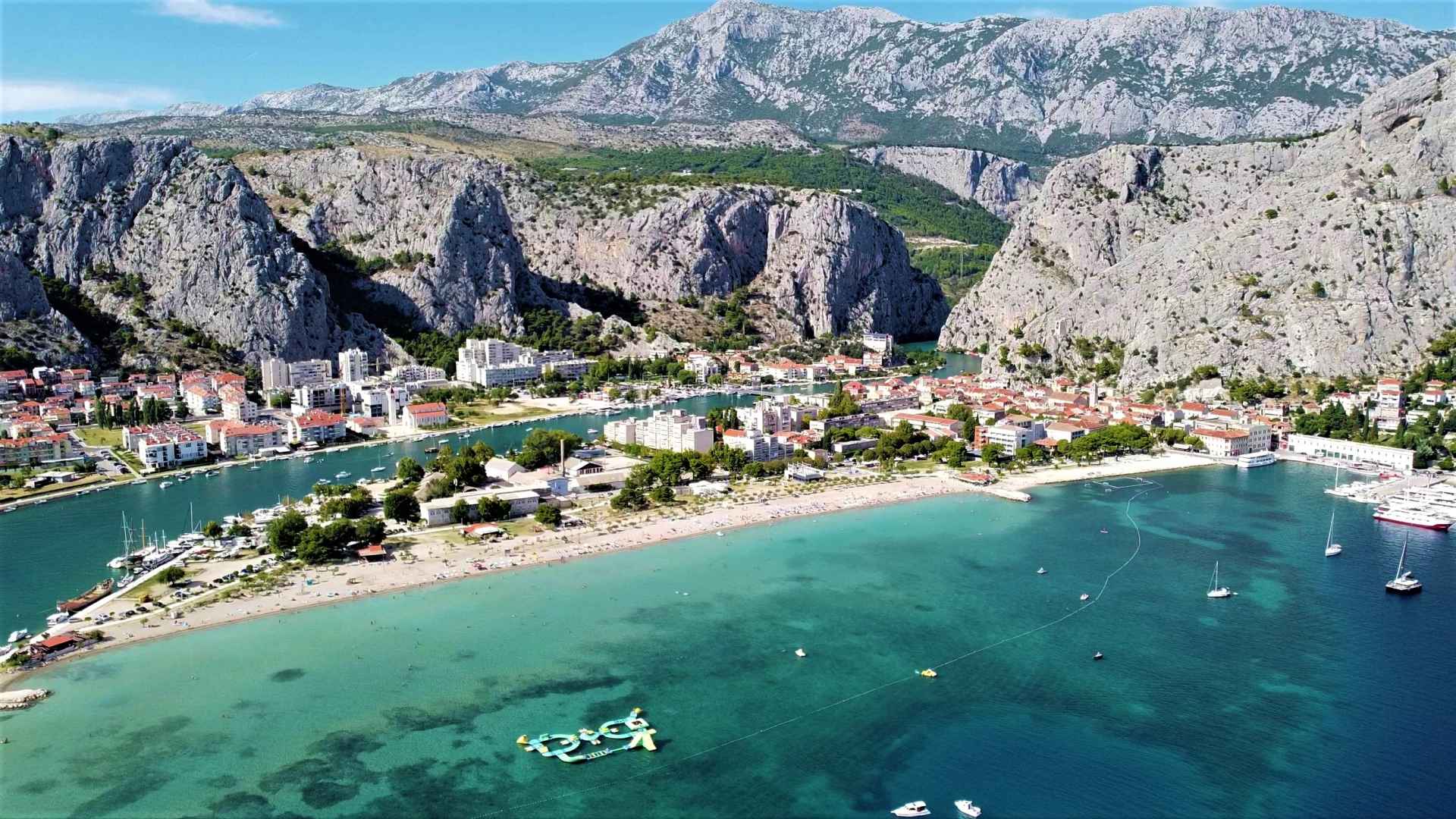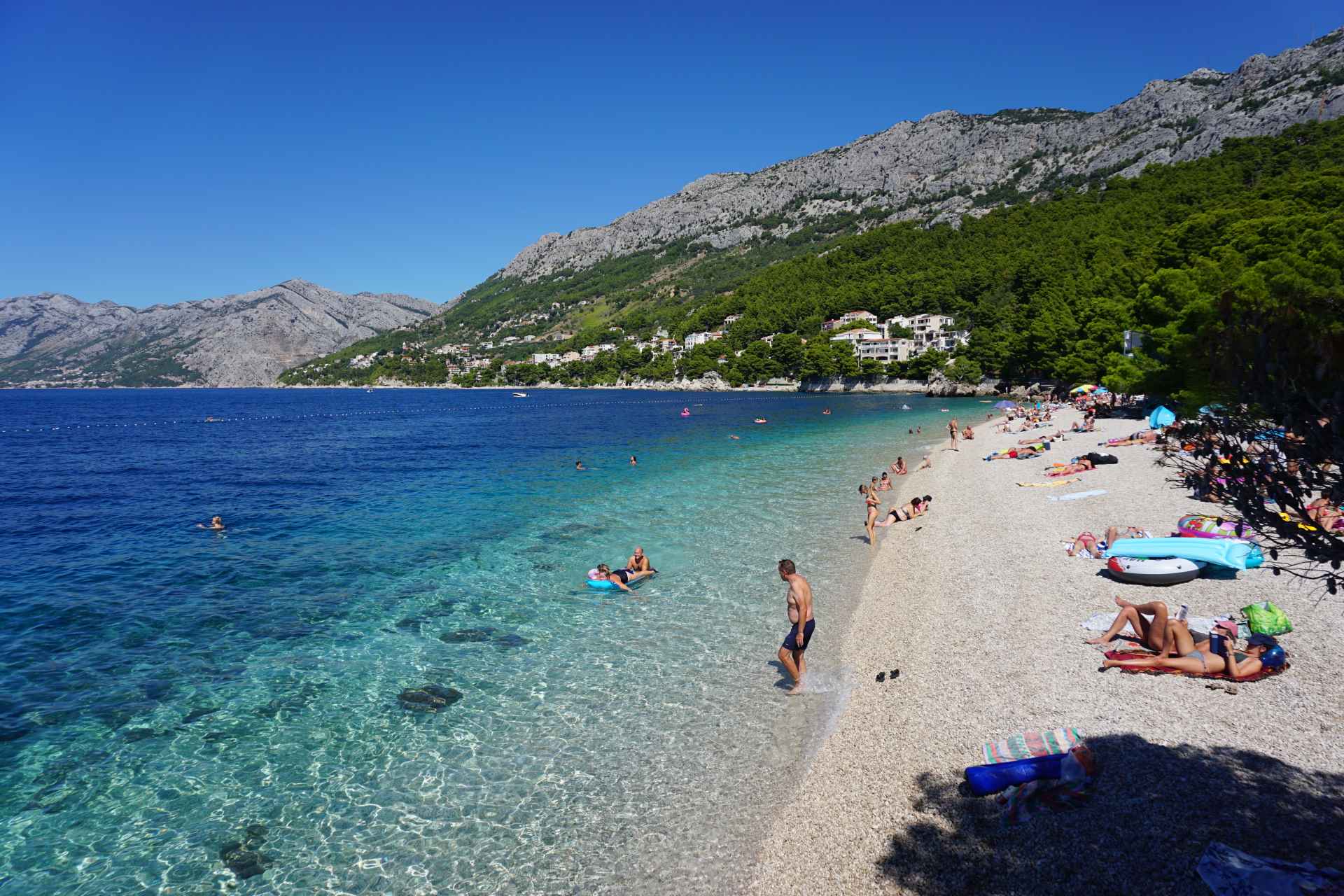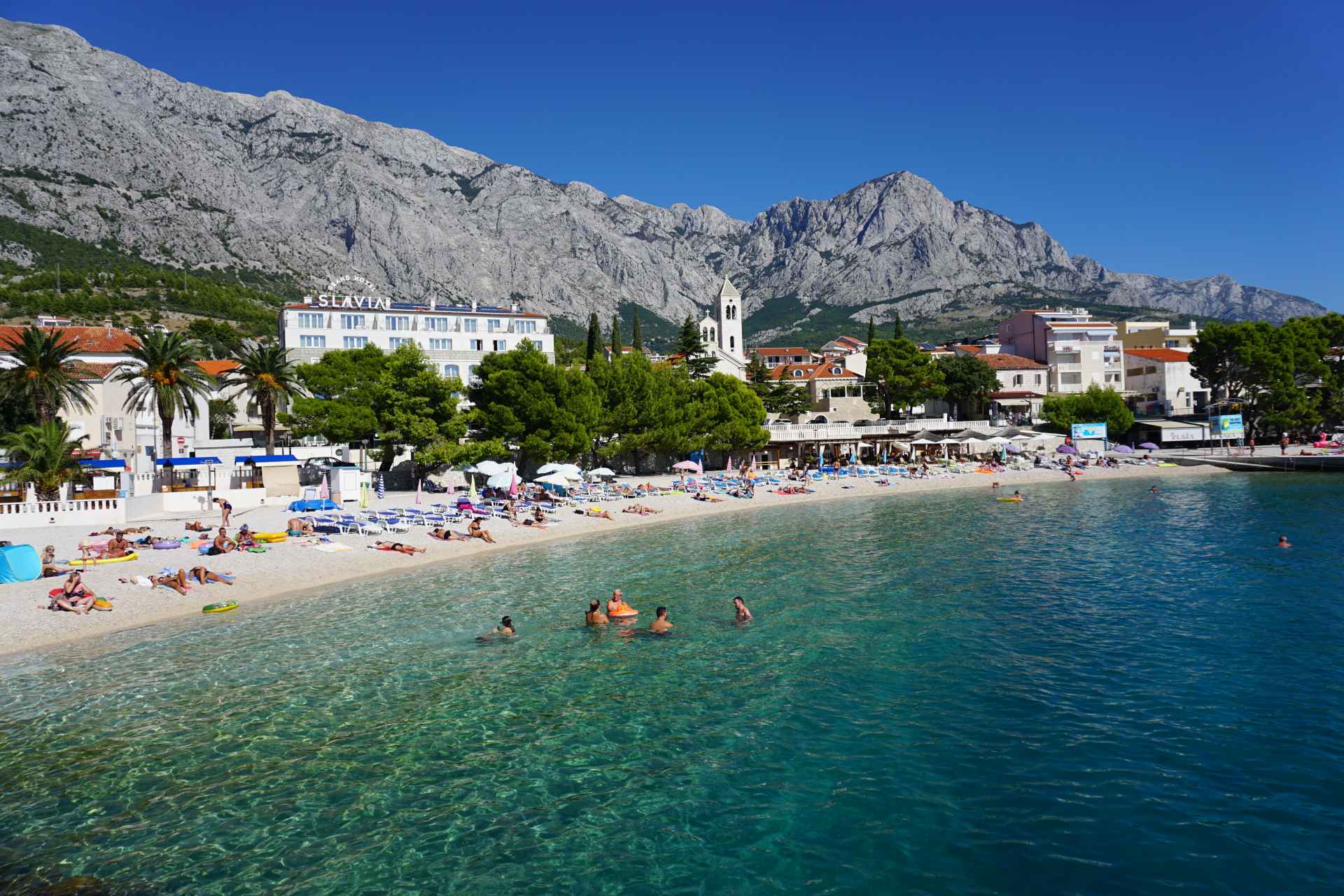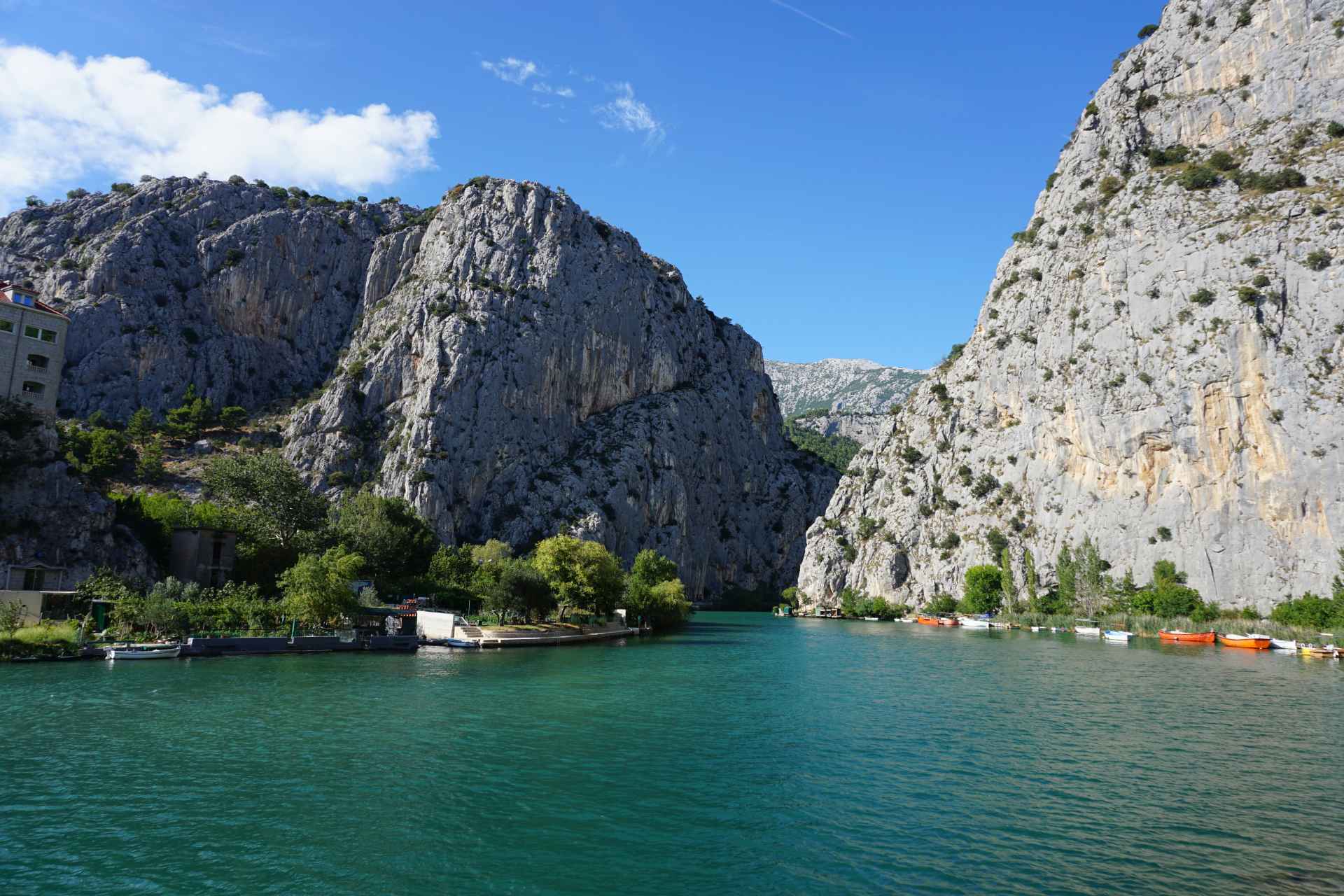Private accommodation Split - Dalmatia Apartments and holiday homes with direct contact! No fees and commissions!
Popular tourist places
Top destinations in Split - Dalmatia
Discover Split - Dalmatia
Tourist guide Split - Dalmatia

Split and Dalmatia are fascinating, but in same time demanding topic, especially in this limited space. We will mention Split and the islands of Brac, Hvar, Vis and Šolta, Makarska and Omis Riviera. We will not ignore fascinating Split hinterland, Adriatic coast, and the magical Dalmatian Zagora!
First, of course, Split, a city of rich history and beauty, was born in the dreams of Emperor Diocletian to spend the last days of his life in his native Dalmatia. The city itself was named after Diocletian's palace (Spalato), built about 300 g n.e. which is today the largest and best preserved late antique palace in the world. Throughout the centuries, this fascinating city developed around the hill of Marjan. After the barbarian destruction, it changed various rulers; Byzantium, Croat rulers, Hungary, Venice, etc. However, perhaps the most recognizable characteristic of this Croatian town is its specific mentality. Famous writer Miljenko Smoje said that if there would be enough big canvas to cover the whole Split, it would be the largest circus in the world. To get to know the city's spirit and the beauty of its streets and its famous waterfront is is best to spend a couple of days here. You will find plenty of room for rent and a wide range of accommodation from cheap apartments to rooms and holiday homes. The best way to make a reservation is to contact directly owners of apartments because there is no expensive agency fee.
In the Split region, there are beautiful islands of Brač, Hvar, Šolta, Vis, Drvenik. Brač is the largest middle Dalmatian island, known for its Zlatni rat beach, as well as numerous beautiful places of Bol, Supetar, Selca, etc. Hvar is one of the world's most famous destinations. Rich and exclusive nightlife, with beautiful stone streets, a lot of restaurants and yacht marinas. It is also one of the birthplaces of Croatian literature, where was born Croatian Renaissance writer Petar Hektorović. The island Šolta is a secret among the Croatian islands. This beautiful island, inhabited since prehistoric times, is first mentioned under the name of Olyntha in the 4th century BC. If you want to experience the indigenous beauty of the Dalmatian island and without the excessive burden of modern tourism, and at the same time find cheaper accommodation through direct contact with the owners of apartments, Šolta is an island for you. The villages of Nečujam, Rogač, and Maslinica, and especially the famous Šolta fields, you simply have to discover. The island of Vis, as one of the most distant islands, has preserved its original charm, and nature remained completely untouched. Here you can explore numerous coves and hidden beaches, and on the neighboring island Biševo you will find the far-known Blue cave, which will surely leave you breathless
Split region and this part of Dalmatia also has two distinctive and very attractive rivieras, Omiš Riviera and Makarska Riviera, which make a wonderful blend of mountains, clear sea, and beautiful pebble beaches. Omiš, an old pirate town is situated in the gorge at the mouth of the Cetina River, where you can experience various adventures like rafting, kayaking and zip line. Makarska is an old lady of Croatian tourism, which attracts a large number of tourists every year because of the large pebble beaches, as well as the neighboring attractive tourist towns of Tučepi, Podgora, Baška Voda and others.
And finally mysterious Dalmatian Zagora! The area of Dalmatia separated by the Kozjak mountain (780 m), Mosor (1339 m), Omiš Dinara (864 m), Biokovo (1762 m) and Rilić (1160 m). It consists of distinctive karst and small fields and its beauty simply fascinating. This space is the place where the Croatian medieval state was formed and has always had an ambivalent relationship with the coast, at the same time associated with it and separated from it in a cultural and civilization sense. Here you can find old stone houses turned into holiday homes, much cheaper accommodation and irresistible views on Adriatic sea. This part of Dalmatia has a famous culinary offer made up of traditional cheeses, lamb, prosciutto and wine. We wish you a pleasant vacation in the Split region and Dalmatia!
Interesting places
Top tourist attractions Split - Dalmatia
Recommendations
What to visit, see and do?

Diocletian's Palace is one of the most reputable, most visited and best preserved monument and ancient Roman building in Europe. More than 1700 years ago, it was built by the Roman emperor Diocletian, who lived here after retiring from the Imperial throne (from 305 until 316 BC). It was built in a beautiful natural bay, 5 kilometers south of Salona (Solin), then capital of the Roman province of Dalmatia. The palace was built as a combination of a luxury villa, or a summer residence for Emperor Diocletian and a Roman military camp (castrum), where Roman soldiers lived. The southern part of the palace, which is closer to the sea, was reserved for the emperor and his closest servants, while the northern part facing the mainland served for the Roman army and the Emperor's Guard. The entire palace is a large rectangular building (about 215 x 180 meters) with four large towers on the corners, four smaller towers on the walls, and 4 doors on all four sides of the world.
On the site of the palace in the 7th century, the town of Split was founded after the arrival of Croats in the area of Dalmatia. Diocletian's Palace served as a perfect starting point for the development of a new city of Split, and its inhabitants made numerous changes and adapted many original buildings and walls into their new living spaces. Despite this, much of the palace, buildings and walls remained preserved to this day. Contours of the Emperor's Palace are particularly visible from the air. The most famous building is certainly the cathedral of St. Duje, the former mausoleum of the Roman emperor Diocletian, who was subsequently converted into a church after the persecution of Christians in the early Middle Ages. Right in front of the cathedral is Peristil, the central square of the Palace, with temples like Jupiter's temple, which remained in its original form and is considered one of the most beautiful European monuments. Particular attractions are the well-preserved Diocletian's cellars, which are one of the best-preserved antique complexes of this kind in the world. It is interesting to visit Vestibul, an old stone lobby with an open circular dome, as well as four city gates (Zlatna, Srebrna, Zeljezna, Mjedena), which will impress you with its beauty and size.
Apart from the ancient Roman buildings, the entire core of the city of Split within the city walls is very interesting because it represents a typical medieval and mediterranean arhitecture, narrow stone houses and streets that appear to be like a maze. It is no wonder that the entire city core, or the entire Diocletian's Palace in 1979, was included in the UNESCO World Heritage list. Because of all this, many tourists visit this beautiful town in a growing numbers. You can find private accommodation and interesting apartments in some of the old houses inside the city walls, where you can experience a fraction of the ancient atmosphere and how life once looked in old Roman palace.

Cetina canyon is one of the most beautiful and largest natural attractions in Dalmatia. It is located in the hinterland of Omis, where the river Cetina flows into the Adriatic Sea. The canyon is impressive with its size, with vertical rocks that reach a height of several hundred meters. It stretches across the lower course of the river Cetina. This emerald green and clean river is a true karst beauty that abounds in rapids, waterfalls, and attracts a lot of nature lovers and adventurers.
It source is at an altitude of 385 m, on the northwestern slopes of the Dinara mountain, and descends to the Adriatic Sea in the length of 105 kilometers. In the upper stream of the river is artificially created Peručko Lake, then it passes through Sinj and Sinj valley, and then enters its magnificent canyon in the lower stream, which is surely the most attractive part of the river. Since 1963, the canyon of the Cetina river has the status of Protected Landscape, thanks to its very well preserved natural habitat and the richness of the plant and animal world.
It is an ideal place for day trips, various adventures, active holidays and nature vacations. Thanks to this natural phenomenon, the nearby Omis has become an important center for adventure tourism and extreme sports. Here you can enjoy zipline, canyoning, kayaking, rafting, walking, biking, and alpinism on the surrounding high and steep cliffs surrounding Cetina. Only a few kilometers away from Omis and the sea, there are popular excursion site of Radman's mill and Kaštil Slanica, where you can taste numerous tasty local specialties, such as dishes under the bake, fennnar, frog, eel, trout and sea fish. Rafting is very popular during the summer tourist season, because it is suitable for families with children. It last 3 to 4 hours, where you can see all the natural beauty of the canyon. The water is several degrees colder than the sea but is suitable for swimming and provides the right refreshment during the hot summer months.
If you plan to spend a holiday on the famous Omis or Makarska Riviera or in the vicinity, we certainly recommend a one-day trip to this wilderness. Cheap accommodation can be found in private apartments, rooms and holiday homes along the entire Omis Riviera.

Blue cave is an underwater cave and a unique geomorphological phenomenon located in the Balun cove on the eastern side of Biševo island. It has been available to the public since 1884 when the Viennese painter Eugen Baron Ransonnet wrote in the newspaper that there is a "marvelous sea cave of indescribable beauty" on the unknown island in the Adriatic.
The cave has two openings, one smaller which is artificially deepened and through which a small boat can enter the cave. The other opening is much larger and more significant, and is located on the south side of the cave beneath the sea level, and through it penetrates the sunlight. At about noon, when the sun is in the ardor, sun rays penetrate through the larger underwater hole in the cave. Sun rays are reflected from the white bottom and illuminate the cave with a unreal and indescribable blue and objects in silver color. It is a special and unrealistic experience because such a scene can be experienced in only a few places in the world, so it's no wonder the fact that it is visited by almost 100,000 visitors a year. Most visitors are visiting this unrealistic cave in July and August, so we recommend visiting in June or September. One of advantages visiting off season is you can enjoy the privacy in this natural phenomenon. To visit Biševo island, there are organized tourist boats from Komiža on the island of Vis, and the ticket to the cave costs up to 10 euros.
In addition to this unusual underwater cave, for which the visit is limited and lasts only 10 minutes, on Biševo island you can visit attractive Medvedina cave or enjoy the beautiful sandy beach Porat, where there are several bars. If you are planning your next visit to Dalmatia and island of Vis, be sure not to miss Blue cave and Biševo island. Contact the owners of the apartments and secure cheap private accommodation on time, and friendly hosts will gladly show you all the hidden coves, beaches, caves and attractions of their island.

Biokovo Nature Park covers almost all of Biokovo Mountain, and the Nature Park was proclaimed in 1981. Biokovo is part of the Dinarid mountain range and is characterized by its imposing height and high steep cliffs along Adriatic coast. It stretches over a distance of 30 kilometers above the well-known Makarska Riviera and looks like a giant wall that is emerging from the Adriatic Sea. The highest peak of Biokovo is Sveti Jure at 1762 meters above sea level, which can be reached by a narrow asphalt road. It is possible to reach top with the car, but of course, much better experience is to climb a mountain on one of the numerous mountain trails. It offers wonderful views across the entire Makarska coast, and the islands of Brac, Hvar and Pelješac peninsula.
On Biokovo, we find numerous karstic forms typical of the Dinarides such as caves. Here is special geomorphological reserve and special reserve for the forest vegetation of beech and fir and the autochthonous black dalmatian pine forest. The botanical world of Biokovo is especially rich and varied, and here in a small area grows over 40 endemic plant species. Part of the nature park is an interesting botanical garden of Kotišina founded by Dr. Jure Radic for the purpose of scientific research and the protection and conservation of the plant world of the mountain. Although at first glance Biokovo makes a rather rough and rocky mountain, there are many protected and endangered animal species, such as eagles, wolves, foxes, badgers, wild boars, mouflons, and numerous types of snakes and reptiles. Due to the proximity of the sea and the attractive viewpoints, Biokovo is especially visited in summer, when it is visited by more than 50,000 tourists. On the way to the top of the mountain, there are several restaurants where you can find refreshments and top-quality local specialties. For all adrenaline enthusiasts, here is organized paragliding, which is a special experience if you have the courage to sail the blue sky.
If you are planning to spend the summer on the Makarska Riviera next summer, be sure to visit this beautiful mountain that will charm you with its untouched nature and wilderness. You can find affordable accommodation in apartments, rooms and holiday homes throughout Makarska, Brela, Baska Voda, Promajna, Tučepi and Podgora, where you can spend your holidays in a combination of sun, beach, clear Adriatic sea and fresh mountain air.

Pakleni islands (Paklinski islands) is a group of 20 islands, islets and rocks that stretch out in front of the town of Hvar on the island of Hvar. They stretch in the east to west direction, and from the island of Hvar are divided by the Pakleni kanal. The name was given from the word "paklini", the kind of pine resin, which used to be used in the construction of wooden boats and sailboats. Today, these low and indented islands cover dense pine forests, and the Mediterranean flax of pomegranate, myrtle and spruce. On the islands are growing oak, rosemary, sage, chamomile, baby duck, fennel, laurel, as well as many other aromatic Mediterranean plants, so visit to them is a unique experience of enjoyable and pleasant scents.
The islands are surrounded by azure and crystal clear Adriatic Sea, and some have well-kept beaches and coves. There are 3 settlements on the islands, but today there are no permanent residents. During summer months here are numerous bars and restaurants and the night life of the town of Hvar is taking place right here. On the island of Jerolim, in front of the town of Hvar, there is also a well-known traditional Dalmatian naturist beach and restaurant. Nearby is also Ždrilca, a wooded cove with pebbles beaches and numerous hidden places for a relaxing and enjoyment in the sea and the sun. Vlaka is a traditional holiday destination for the inhabitants of Hvar on the Pakleni islands, which was once a Roman property, and today it is a pleasant beach with a beautiful beach and several bars and restaurants. Palmižana is the oldest and most famous excursion destination, and there is a nautical marina. It is a spacious bay with shallow sandy beach, surrounded by dense pine forests and aromatic Mediterranean plants suitable for families with children.
There are numerous boat lines to the islands including taxi boats from the town of Hvar, so it is very well connected with Hvar. You can also spend a day trip on one of the attractive tourist boats, which is the best way to get to know this wonderful aquarium. The excursion includes a tour of the Pakleni islands, panoramic boat rides and stopping at several beautiful coves for swimming. Due to its exceptional natural beauty and values, the islands have been protected as a monument of nature and have been under protection since 1972. If you plan to spend your vacation on the island of Hvar, you must visit this beautiful islands and enjoy in mediterranean senses. Book accommodation directly with the owners of private apartments, and save up to 40% on expensive agency fees.

Zlatni Rat is one of the most famous and certainly the most beautiful beaches of the Adriatic. It is located in Bol on the south side of the island of Brač. Because of its unique beauty and unusual appearance it is a symbol of Croatian tourism and the eastern coast of the Adriatic Sea.
It was made by the sedimentation of a beautiful natural white gravel around the underwater reef forming a large pyramid structure that stretched up to 500 meters from the shore. The phenomenon and particularity of this beach is that it changes its shape depending on wind, waves and sea currents, so that the very tip of the beach sometimes turns to one, and sometimes to the other side.
On three sides it is surrounded by the beautiful and crystal clear Adriatic Sea, and on the land side it is surrounded by pine forests, offering pleasant smells and thick shade for hot summer days. There is a whole range of catering and service facilities where you can find refreshments in the form of cold drinks and cocktails, fresh fruit, and delicious grilled dishes and traditional Dalmatian specialties. On the beach you can rent sun loungers and parasols, and for active vacationers there are many water sports such as jet skiing, banana rides, tubs and parasailing. Since the beach is located in the narrowest part of the Hvar Channel between the islands of Brač and Hvar, here always blows pleasant and light winds, making it a favorite surfer and kite surfer destination. One small part of the beach is fenced and designed for dogs so you do not have to worry if you take your pet with you on vacation. A special experience is to climb to the highest peak of the island of Brač, Vidova gora, from where you can enjoy a wonderful view of Bol, Zlatni Rat and the neighboring island of Hvar and the entire central Dalmatian archipelago.
From Bol, Zlatni rat is about 2 km away, and it is possible to reach it with a pleasant walk along the coast, car or tourist train, which regularly drives from the center of the town. In the summer months it is possible to come here with numerous tourist boats and sailing boats that go on one-day excursions from Split, Makarska or Omiš riviera and the island of Hvar. The island of Brac with the mainland is well connected by ferry and catamaran lines from Split, so if you want to get to know this beautiful Dalmatian island and enjoy one of the most beautiful beaches in the world, contact the owners directly and find cheap private accommodation.
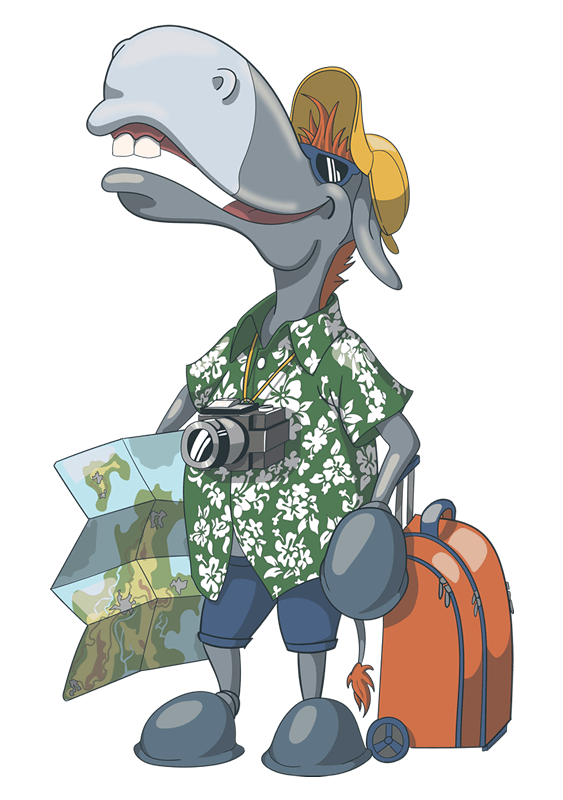
Climate & Weather
Climate and weather conditions Split - Dalmatia
Dalmatia is a historical region in Croatia that stretches from Zadar and the mountain Velebit in the north to Dubrovnik and Konavle in the very south of Croatia. In almost all of Dalmatia dominates the typical Mediterranean climate with dry, sunny and hot summers, mild and rainy winters. In the Dalmatian hinterland (Dalmatian Zagora) predominates submediterranean climate, which differs from the typical Mediterranean climate, because the winters are slightly colder and the summers are mostly slightly hotter than the average. Thanks to the multitude of sun and heat here dominate typical evergreen plants; holm oak, Aleppo pine, Dalmatian black pine and from agricultural crops; olives, figs, and vineyards.
Split region is specific due to central Dalmatian islands, which are larger and stretch in the direction from west to east. These are Hvar, Brač, Šolta, Korčula, Vis, Lastovo and Čiovo, and not far from Vis, there are the islets of Jabuka and Brusnik, which are of volcanic origin. Hvar is one of the sunniest places in Croatia, and precisely because of the abundance of sunshine, clear skies and pleasant sea temperatures, Split and its surroundings and Split archipelago is often visited by tourists looking for a pleasant and unforgettable vacation. Good quality and crystal clear sea is a characteristic of the entire Dalmatian coast, especially Dalmatian islands due to the relatively low population density and underdevelopment of the industry. Many Dalmatian beaches are the bearers of the blue flag - a symbol of cleanliness, quality of service and ecologically preserved environment.
Below are average maximum and minimum daily air temperature and the sea temperature in Split, which best reflects the pleasant Mediterranean climate.

* average air temperature (°C) during the year in region Split - Dalmatia

* average sea temperature (°C) during the year in region Split - Dalmatia
Accommodation Split - Dalmatia


